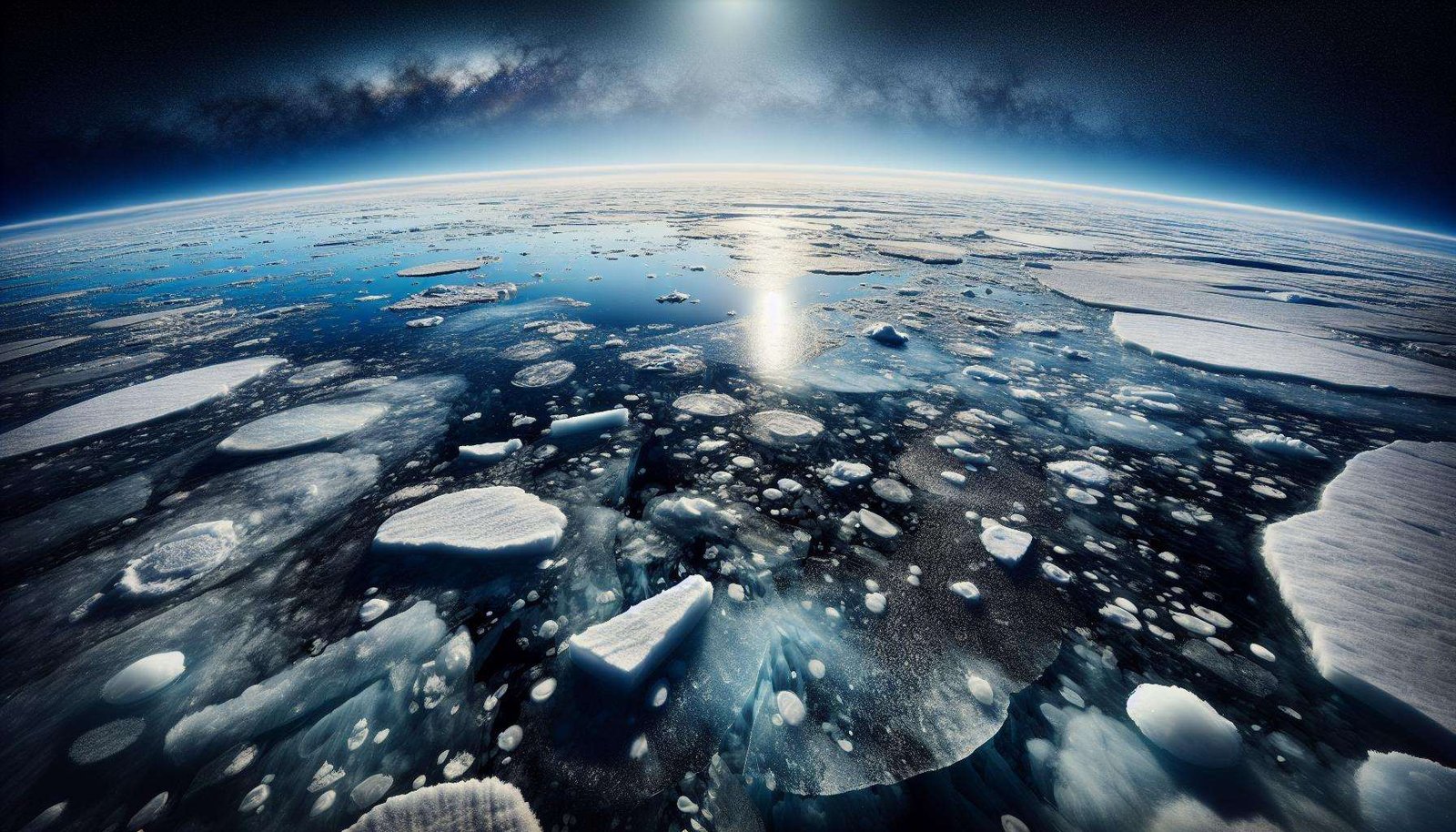
We all know Trump wants Greenland. But why and why now? Well this data supports the fact that arctic sea ice is declining at precipitous rates opening shipping passages formerly not feasible due to the ice.
And recent reports indicate that Arctic sea ice levels have reached their lowest winter levels ever recorded. This alarming trend has significant implications for global climate patterns, wildlife habitats, and environmental sustainability. As we delve into the causes and effects of this dramatic change, the importance of understanding the connections between Arctic ice and global ecosystems becomes evident.
The Current State of Arctic Sea Ice
The Arctic region, known for its frozen landscape, is experiencing unprecedented changes. According to data from NASA, the average extent of sea ice during winter months has decreased significantly over the last few decades. This decline is largely attributed to rising global temperatures, primarily driven by human activities such as the burning of fossil fuels. These activities release greenhouse gases, such as carbon dioxide, into the atmosphere, trapping heat and causing the planet to warm.
The melting of Arctic ice is not just an isolated phenomenon; it serves as a stark indicator of broader climate changes occurring worldwide. As per scientific consensus, the Earth’s climate system is interconnected, meaning changes in one part can significantly impact others. In the case of the Arctic, less ice means that the region absorbs more solar energy, accelerating warming trends—a concept known as the albedo effect.
Understanding the Science: Albedo Effect
The albedo effect is a critical component in the science of climate change. Albedo refers to how much sunlight a surface reflects. Ice and snow, with their bright, white surfaces, have a high albedo, meaning they reflect most of the sunlight that hits them. However, when ice melts, darker ocean water is exposed, which absorbs more sunlight and heats up faster. This process leads to more ice melting, creating a feedback loop that exacerbates warming. For those interested in the technicalities, Wikipedia’s article on Albedo provides a comprehensive explanation.
Impact on Wildlife and Ecosystems
As the ice diminishes, Arctic ecosystems are in peril. Iconic species such as polar bears, which rely on sea ice for hunting seals, face habitat loss. According to the World Wildlife Fund, these changes could result in decreased polar bear populations. Moreover, indigenous communities who depend on Arctic wildlife for sustenance and cultural practices are also at risk. The ripple effect extends to marine life, where fish and other organisms must adapt to new conditions affecting food chains and biodiversity.
Global Implications and Climate Patterns
The loss of Arctic ice doesn’t just affect local ecosystems; it influences global climate patterns, including ocean currents and weather systems. The Arctic acts as a global air conditioner, moderating temperatures. When this balance is disrupted, weather patterns such as the jet stream are affected, leading to extreme weather events in the United States, the UK, and beyond. The NASA Climate Change Center highlights the growing frequency and intensity of storms, droughts, and floods as a result.
Efforts to Mitigate Arctic Warming
While the situation is dire, efforts are underway to mitigate the impacts of Arctic warming. International agreements like the Paris Agreement on climate change aim to reduce global carbon emissions by setting targets for countries to achieve. Renewable energy sources, such as wind and solar power, are pivotal in reducing reliance on fossil fuels. By decreasing emissions, we can slow down the warming trend and give the Arctic a fighting chance to recover. For more on renewable energy developments, visit this International Energy Agency summary.
Technological Innovations Leading the Way
Innovation is a key player in the fight against climate change. Advances in technology are helping scientists monitor and understand Arctic changes more precisely. Satellite imagery and remote sensing provide essential data, allowing researchers to track ice melting in real time. Moreover, tools like computer modeling simulate future climate scenarios, assisting policymakers in making informed decisions. For tech enthusiasts, this discussion on Arctic technology offers an intriguing glimpse into the gadgets and methods involved.
Community Initiatives and Sustainable Practices
Individuals and communities are also playing a crucial role. Grassroots movements and local initiatives advocate for lifestyle changes that support sustainability. By reducing energy consumption, recycling, and supporting sustainable products, people can contribute to a more just and balanced environment. Educating younger generations on these practices ensures that sustainability becomes a norm rather than an exception, preserving the planet for future inhabitants. The Sustainable Development Institute highlights various community-led projects promoting a sustainable future.
Conclusion: Turning Awareness into Action
Understanding the crisis of Arctic sea ice at its lowest winter levels ever is just the first step. The real challenge lies in transforming this knowledge into actionable solutions. By embracing innovative technologies, supporting policy changes, and committing to sustainable lifestyles, we can make a difference. This global issue requires local actions, and while the journey can seem overwhelming, every effort counts towards preserving the Earth’s fragile ecosystems. By keeping informed and engaged, as advocated by reliable sources like NASA and the International Energy Agency, we can contribute positively to a sustainable future.
The post Arctic Sea Ice Hits Record Low Winter Levels: Implications for Climate and Wildlife appeared first on Green.org.














